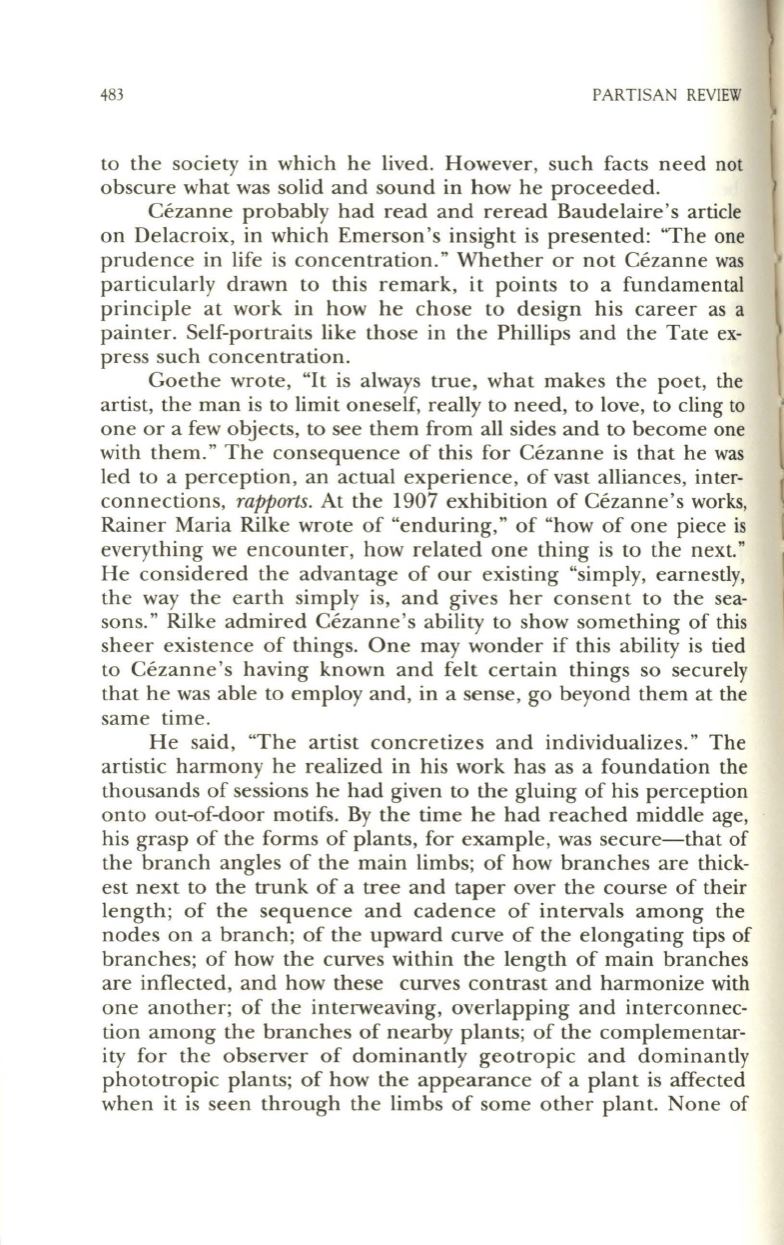
483
PARTISAN REVIEW
to the society in which he lived. However, such facts need not
obscure what was solid and sound in how he proceeded.
Cezanne probably had read and reread Baudelaire's article
on Delacroix, in which Emerson's insight is presented: "The one
prudence in life is concentration." Whether or not Cezanne was
particularly drawn to this remark, it points to a fundamental
principle at work in how he chose to design his career as a
painter. Self-portraits like those in the Phillips and the Tate ex–
press such concentration.
Goethe wrote, "It is always true, what makes the poet, the
artist, the man is to limit oneself, really to need, to love, to cling to
one or a few objects, to see them from all sides and to become one
with them." The consequence of this for Cezanne is that he was
led to a perception, an actual experience, of vast alliances, inter–
connections,
rapports.
At the 1907 exhibition of Cezanne's works,
Rainer Maria Rilke wrote of "enduring," of "how of one piece is
everything we encounter, how related one thing is to the next."
He considered the advantage of our existing "simply, earnestly,
the way the earth simply is, and gives her consent to the sea–
sons." Rilke admired Cezanne's ability to show something of this
sheer existence of things. One may wonder if this ability is tied
to Cezanne's having known and felt certain things so securely
that he was able to employ and, in a sense, go beyond them at the
same time.
He said, "The artist concretizes and individualizes." The
artistic harmony he realized in his work has as a foundation the
thousands of sessions he had given to the gluing of his perception
onto out-of-door motifs. By the time he had reached middle age,
his grasp of the forms of plants, for example, was secure-that of
the branch angles of the main limbs; of how branches are thick–
est next to the trunk of a tree and taper over the course of their
length; of the sequence and cadence of intervals among the
nodes on a branch; of the upward curve of the elongating tips of
branches; of how the curves within the length of main branches
are inflected, and how these curves contrast and harmonize with
one another; of the interweaving, overlapping and interconnec–
tion among the branches of nearby plants; of the complementar–
ity for the observer of dominantly geotropic and dominantly
phototropic plants; of how the appearance of a plant is affected
when it is seen through the limbs of some other plant. None of


